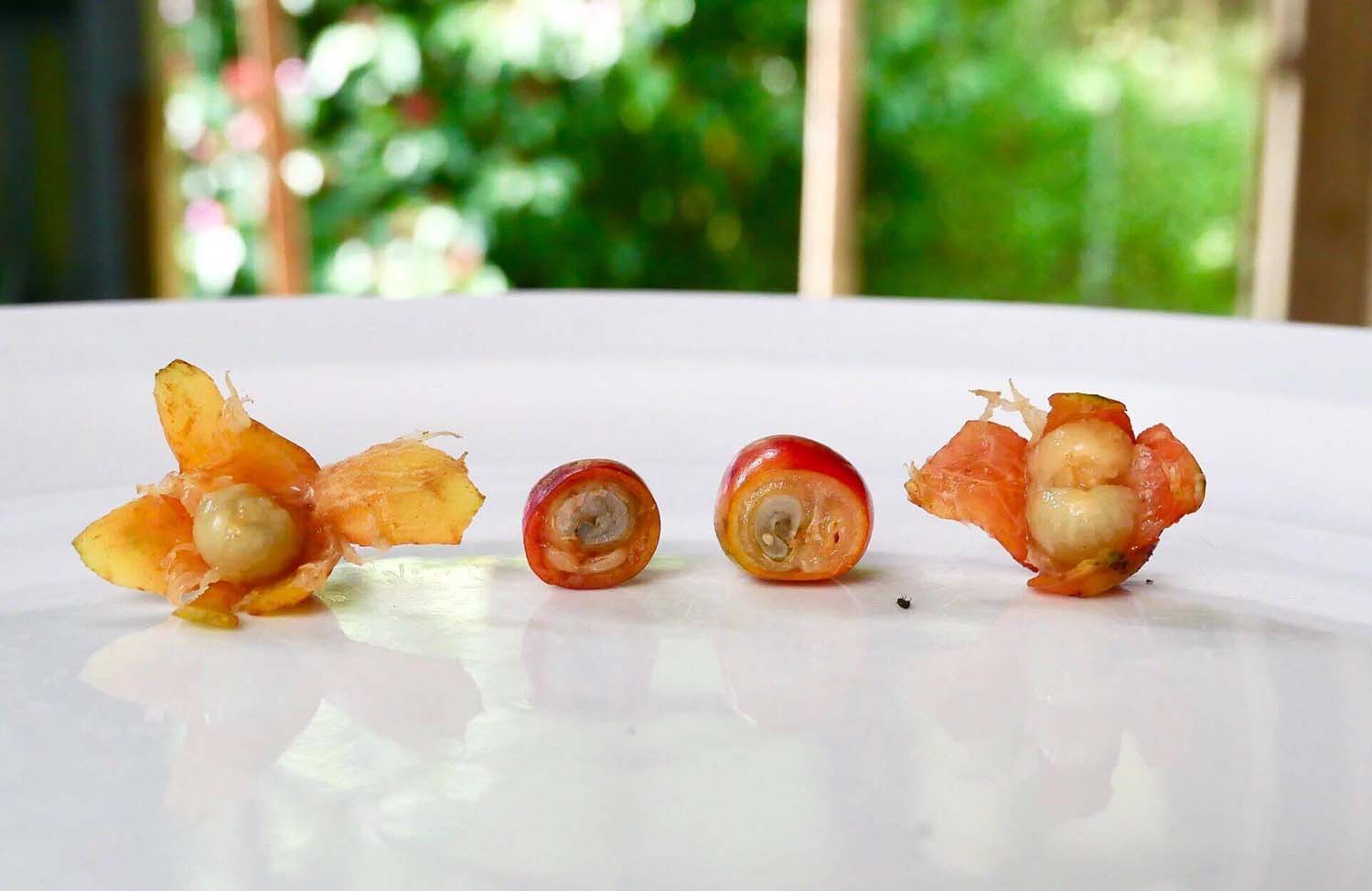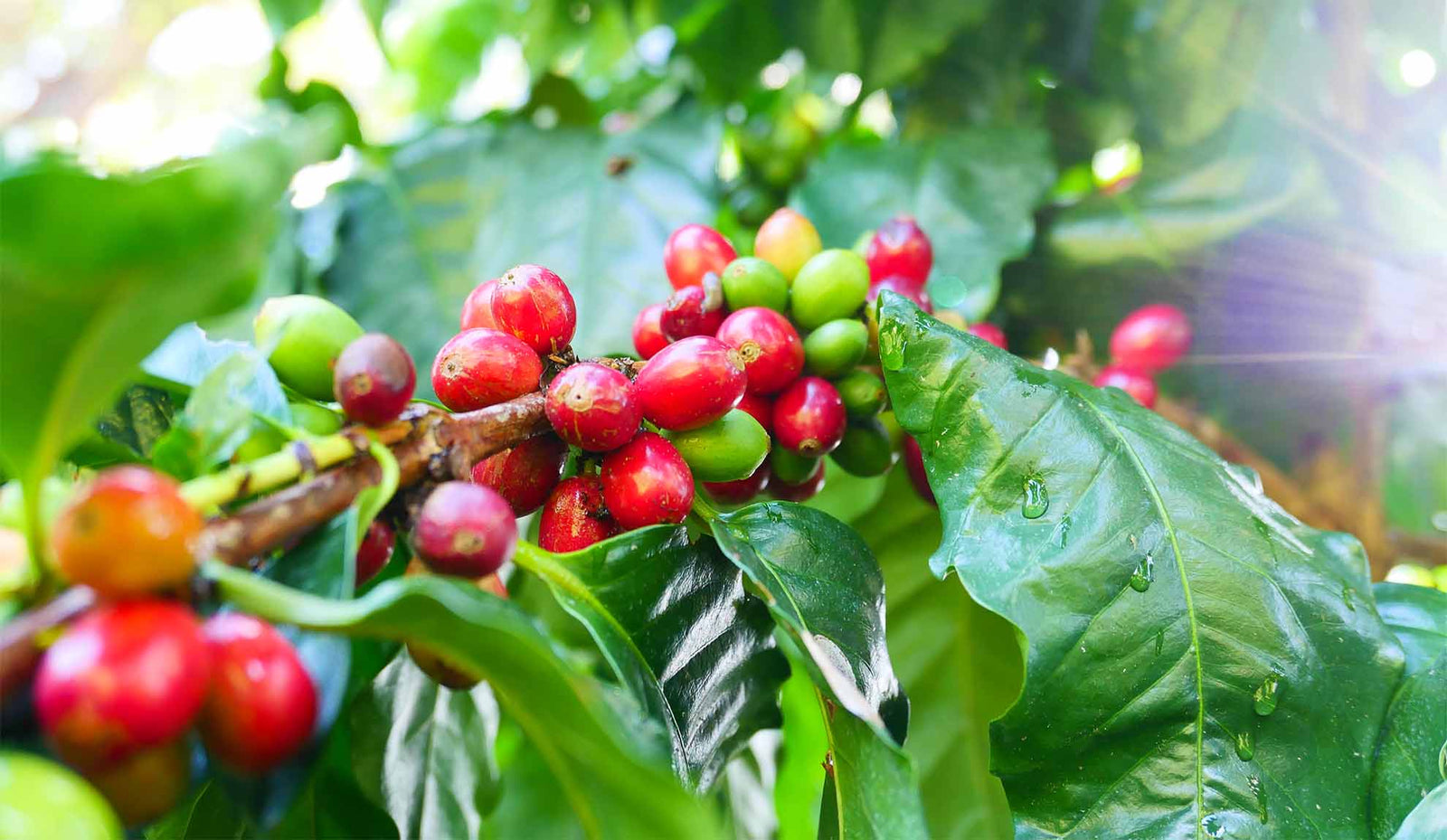The grading standards for Hawaiian Coffee are almost as confusing to coffee growers as they are to coffee buyers. For washed coffees, there’s Fancy coffee, Extra Fancy, No. 1, Select and Prime -- but not for natural or honey-processed coffees. Some Hawaiian coffee growing regions have designations, while others do not. For instance, you won’t find Ka’u Fancy coffee even though Ka’u coffee growers produced over 3,275,000 pounds of coffee cherry in 2014/2015 (more than Maui, Molokai & Oahu combined) simply because there is no official state-sanctioned grading designation for Ka’u coffee. Although many Ka’u coffees could qualify as Fancy grade, Ka’u Fancy coffee, technically, does not exist. On the flip side, Mauidoes have a grade designation for Fancy coffee but, because the beans don’t grow as large in Maui, you’re unlikely to see it on the shelves. Same with Kauai and Molokai. So, if you find yourself a little confused when buying Hawaiian coffee, you're not alone. Here, we'll clarify the terms used on labels, and explain the relationship between classifications, cost, and quality.
The intent of this article is to simplify and answer common questions regarding the grading classifications, cost & quality for Hawaiian coffee as of 2016. So whether you’re purchasing wholesale for your company, or you’re a #coffeelover interested to learn, this article is for you. We’ll answer questions like:
What’s a Fancy coffee? Do the grades/sizes taste different? Why don't I see Maui Extra Fancy (etc)? How do the grading standards for Hawaiian coffee compare to other origins? Does size really matter?
Once you know the answers, you might think to yourself:
“So, if bean size, processing method, and origin don’t determine quality, then why use them at all? ”
Friend, we’ll touch on that, too. Let’s begin.
Hawaiian coffee is graded and classified based on 4 characteristics: size, defect count, origin, and processing method.
ORIGIN: Which Hawaii origins have coffee grading standards?
Oahu
Molokai
Maui
Kona
Kauai
Hawaii Island (a.k.a. Big Island)
Hawaii
What this means for you: These are the only Hawaii origins where you’ll find certified grading standards. “Hawaii” is a catch-all phrase for regions that were left out, like Ka’u, Puna, and Hamakua. That’s why there is no such thing as Extra Fancy Ka’u coffee. Instead, it’s generically called Hawaii Island or Hawaii Extra Fancy.
SIZE, DEFECT: Grading Standards forWashed Hawaiian Coffees
Below is a simplified version of this document. There’s no need to memorize this. The point is that coffee bean size decreases andallowable defects increase the further down the list you go. **One thing to be clear about is thatallowable defect does not equalactual defects present in the coffee.
Extra Fancy: Largest beans and the fewest permittable defects
- Size:19/64 inch, or “Size 19” for Hawaiian coffees which are flat-sided, ornot a peaberry.
- Defects: 8 full defects per 300 grams of coffee, 40 partial defects, or 80 defects with two “pinholes” or less (a pinhole is evidence of bug damage).
- Extra Fancy coffee commands the highest dollar value of the flat-sided (non-peaberry) beans.
Fancy Coffee
- Size:Slightly smaller than Extra Fancy: 18/64 inch, or Size 18.
- Defects: Permits 12 full defects, 60 partial defects, or 120 partial with <2 pinholes.
No. 1
- Size: 16/64 inch, or Size 16
- Defects: 18 full defects, 90 partial, 180 with <2 pinholes.
Hawaii Select
- Size: doesn’t matter
- Defects:< 5%
Hawaii Prime
- Size: doesn’t matter
- Defects: < 20%
Hawaii #3
- Size: doesn’t matter
- Defects: < 35%
What this means for you: Extra Fancy coffee has the highest market value of the above beans, and Hawaii #3 has the least. When considering defects, this makes sense. The highest value coffeesshould be those with the fewest defects, right? Right. Assessing market value based onsize, however, is a bit more complicated.
What does size have to do with it?:Aesthetics are partly at play here; people will pay more for big, whole Macadamia nuts, even though the split nuts taste the same. The same goes for apples, carrots, and coffee.
But does bean size really matter? And if so, how?: If you like looking at your coffee just as much as drinking it, then yes, bean size matters. But pre-ground? Probably not. Big coffee beans may tastedifferent but, other factors being equal (like defect count), there’s no evidence they tastebetter.Ourselves included, many cuppers have slurped sizes side-by-side countless times, over various farms and harvest seasons, and to our knowledge, there have been no consistent qualitative distinctions found between the sizes.
Another confusing detail you should be aware of is that the current size grading classification doesn’t take into account that some origins simply don’t produce large beans. You’re not going to find a Maui Extra Fancy or Kauai Fancy because environmental conditions won’t allow it. Size grading does fulfill one important purpose, however: it creates more consistent roasting because coffees roast more evenly when the beans are approximately the same size.
SIZE & DEFECT: Grading Standards for Un-Washed Hawaiian Coffees
Prime, Natural/Mixed Natural
- Size: doesn’t matter
- Defects: <20%
- Note: Unwashed includes natural or honey processed coffees. Notice there’s only one grade for these coffees.
What this means for you:Regardless of defect count or size, naturals & pulp-naturals will be classified as the same: Prime -- a low-value grade with a high defect allowance. Given the high defect allowance of this grade, some producers don't have sufficient incentive for caring for or removing defects in their natural coffees - like the producers seen below - while other producers will attend meticulously to their naturals, like those seen in the photo above. Regardless, they are all classified as Prime.
What this means for you: Now many farmers producing un-washed coffees - like those seen directly above - have found buyers that don't seem concerned with the off-flavors resulting from poor harvesting and excessive fermentation. Chances are the defect flavors that are somewhat masked by a dark roast, a lot of sugar, and some branding cache'. As for perceptive coffee drinkers, just know that you may need taste around before finding a good honey process or natural coffee in Hawaii. Unless you know a good farmer (and we're happy to accept referrals - wink, wink), it might be tough. In any case, don't judge the region by a few bad examples.
If you’ve been paying attention you’ve probably come to the same conclusion that many in the Hawaii coffee industry have: size, processing method, and origin are not good indicators of good coffee.
Evidence?The Grand Champion winner of the Hawaii Cupping Competition in 2014 (commercial division) was Maui Mokka natural, the tiniest bean in Hawaii. And also a natural.
So what's the alternative?
Some coffee growers advocate moving to a similar model as the Specialty Coffee Association of America: grading based on defect rate.
Sounds simple, right? It is. Under this model, farmers could simply communicate the size of a coffee to buyers who want the biggest, Extra Fancy coffee beans. Maui’s coffee would be held to the same defect standard as Kona. Farmers who don’t want to separate their coffees into sizes don’t have to. Naturals and washed coffees are evaluated equally. Oh, the simplicity!
Defects = grade. These are examples of defects common in coffee beans. Learn more about these defects here.
So, if bean size, processing method, and origin don’t determine Hawaiian coffee quality, why use them at all? Historically, there are good reasons for the size-based classifications. But those reasons have passed… At this point, the rationale goes something like this: some people will pay more for bigger coffee beans - particularly in Kona.
How do you know what coffees to buy? For at-home drinkers, we recommend ignoring the label classifications for now, because they're not consistently useful. Ask for recommendations from friends with a similar palate, or look through the social media accounts farms/ mills you're interested in.
Have comments, thoughts, or questions? Please send them to hello@bigislandcoffeeroasters.com




